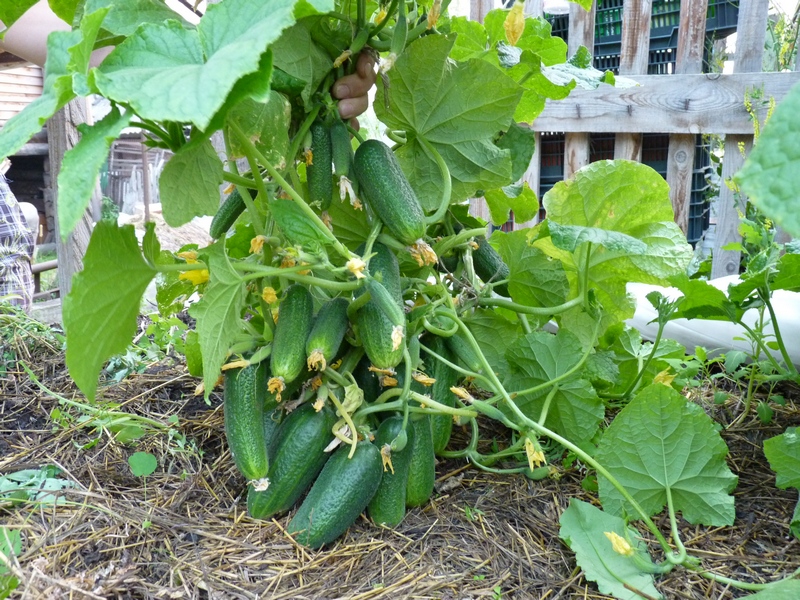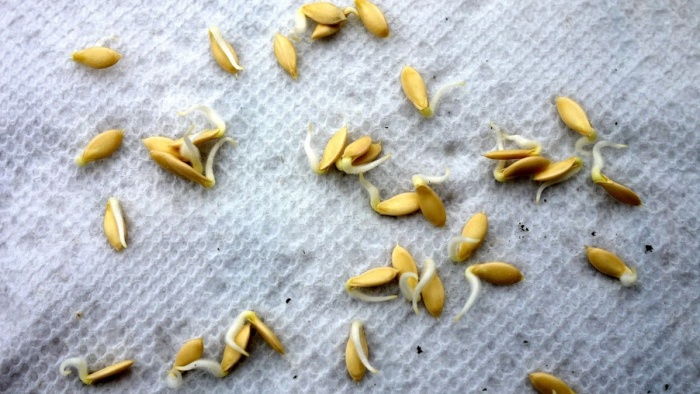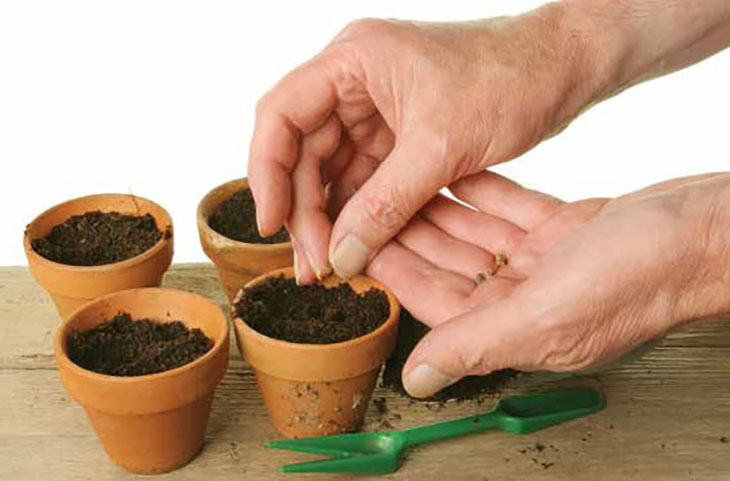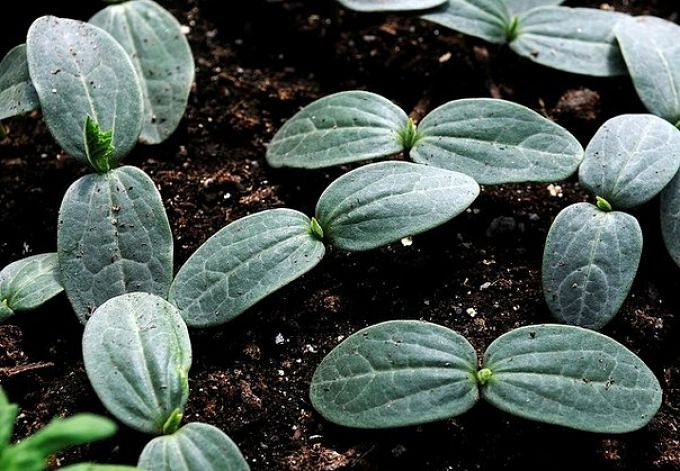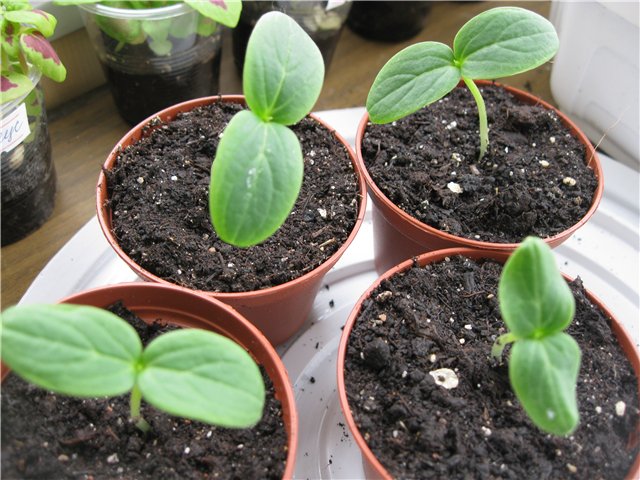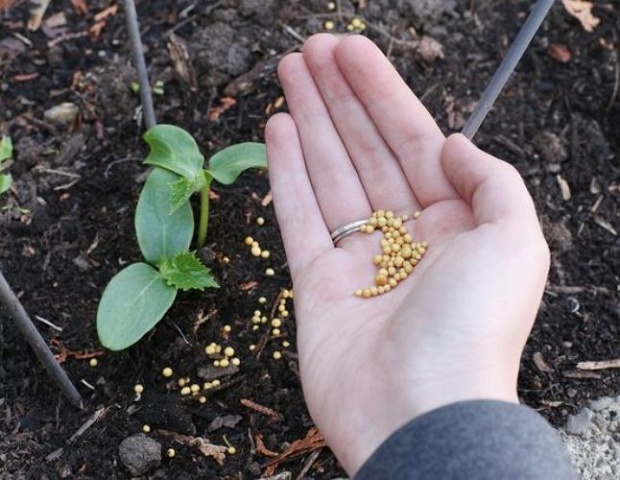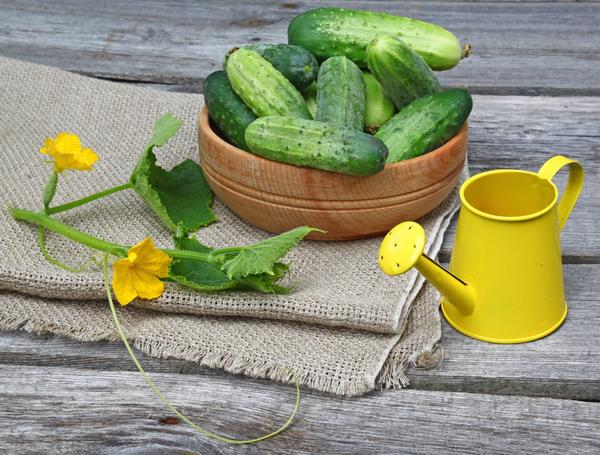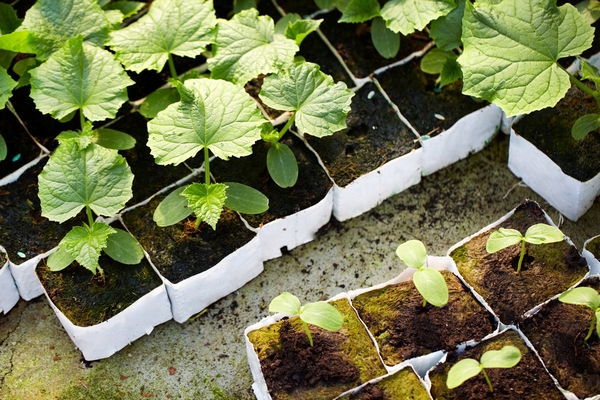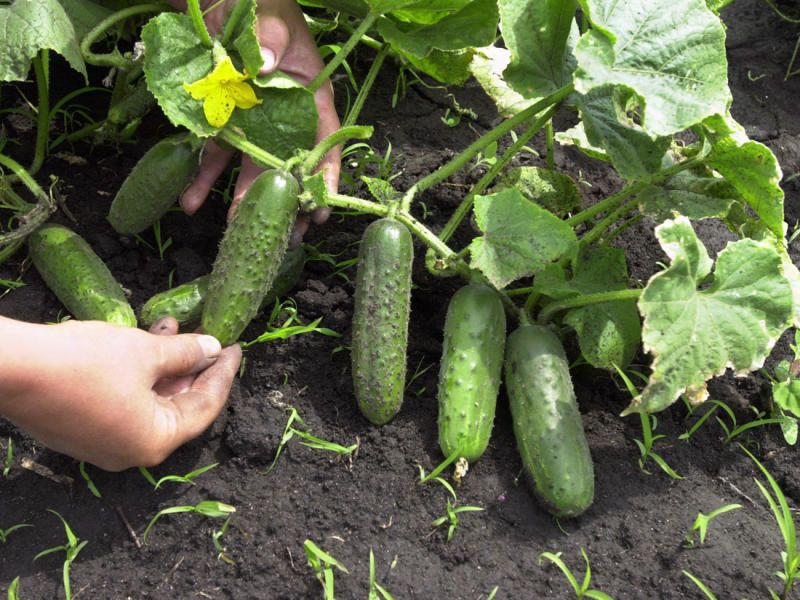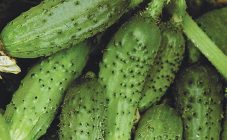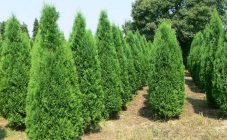Content:
What will be the harvest of cucumbers and whether it will be obtained at all depends largely on the quality of the seedlings. Lovers of this culture successfully harvest by growing cucumbers not only in the garden, but also in apartments. How to plant cucumbers for seedlings correctly, what conditions must be met and not make mistakes, what vegetable growers - amateurs with many years of experience advise - is described in the article.
What factors affect the development of cucumbers
Regardless of where the cucumbers will be grown - in a greenhouse, a greenhouse, open field or at home, on a windowsill or a balcony - we must not forget the main characteristics of this culture, the features of its growth and development, preferences and requirements.
- Cucumber is a thermophilic, light-loving and moisture-loving plant.
- Prefers fertile soil rich in nutrients.
- Does not tolerate drafts at all.
- The culture does not tolerate thickening of plantings.
- It develops and bears fruit better with the vertical arrangement of the lashes.
- The cucumber requires the formation of a bush.
- Under unfavorable conditions, plants are susceptible to powdery mildew, white and gray rot, anthracnose and some others.
- The most productive varieties are self-pollinating hybrids with a female flowering type.
Seedlings of cucumbers for growing in the open field
The timing of sowing seeds for seedlings for open ground depends on the climatic conditions of a particular region. In central Russia it is April 15-25.
Seeds for sowing need to be taken large, full-bodied. It is not recommended to use seeds obtained from last year's harvest.
First, the seeds are calibrated: immersed in a 5% salt solution for 20 minutes. In this case, small and damaged seeds will float, and full-fledged ones will settle. High-quality seeds are pickled in potassium permanganate and soaked in a solution of growth stimulants, following the instructions. Then, to obtain friendly shoots, they are kept in water for two hours at a temperature of 60⁰С. After that, cucumbers begin to bear fruit earlier and increase the number of ovaries.
After warming up, the seeds are placed in a damp cloth until they swell completely for two days at a temperature of 20-25⁰С. To increase the cold resistance of future seedlings, hardening is carried out, for which the seeds are placed in a refrigerator. This contributes to the emergence of fast and friendly seedlings. The seeds are ready to plant!
Planting and leaving
The substrate for planting is prepared from garden soil, humus and sand (2: 2: 1). It is also recommended to add a glass of ash and some crushed eggshells. Sand can be replaced with sawdust. The garden soil must be steamed to destroy the fungi that cause seedling diseases. All ingredients must be thoroughly mixed and spilled with hot potassium permanganate.
Peat cups or other containers are filled with prepared earth by ¾; the soil is compacted.Ceramic or plastic flower pots, peat tablets, milk bags or cut plastic bottles (holes must be made in them so that water does not accumulate) and even homemade newspaper cups are also suitable for seedlings.
The seeds are buried in the ground to a depth of 1.5 - 2 cm, watered with warm water, covered with transparent material and placed in a warm place. When shoots appear in three days, the film is removed, shoots with ugly cotyledons are removed and the seedlings are placed on the windowsill. The temperature is reduced to 18-20⁰С during the day, and up to 15⁰С at night. As the seedlings grow, the soil is added to the cotyledonous leaves, but so that the ground does not touch them. This will increase the mass of the root system. The numerous small bumps on the stem of the plant are the future roots. They will sprout when the soil is added, and the total root system will increase significantly.
When the cotyledon leaves unfold, the seedlings are gently watered with warm water (26-29⁰C) daily. After 5-6 days, real leaves will begin to develop. Seedlings should be fed with organic fertilizers - bird droppings diluted 1:20 or mullein - 1:10. In their absence, minerals are used: 15 g of superphosphate and 10 g of potassium per 10 l of water - three teaspoons for each plant.
The second feeding is carried out two days before disembarkation. 10 g of ammonium nitrate, 30 g of superphosphate and 10 g of potassium sulfate are diluted in 10 liters of water.
Landing in open ground
Seedlings with 4-5 leaves are planted in open ground at a maximum of 25-30 days. Overgrown seedlings slowly take root, enter fruiting late and finish early. In central Russia, the landing is carried out on May 10-25, depending on specific weather conditions. The main rule is that the soil temperature should be at least 16⁰С.
Two days before planting cucumbers in the ground, the beds are prepared with seedlings. Experts advise to grow cucumbers in "warm" beds. To do this, remove 25 cm of soil and fill the trench with chopped weeds without roots and seeds, dry grass, and hay. Sprinkle with urea. A 15-centimeter layer of manure is laid on top, compacted. Manure is covered with garden soil and covered with foil. In two days, the soil will settle, and the bed will be ready.
It is better to plant seedlings in the morning or in cloudy weather. The seedlings must be well watered 1.5 hours before planting. The holes are made 10-12 cm deep, placing them every 30 cm. They are disinfected with a solution of potassium permanganate. Peat cups are placed in the grooves so that they are 1 cm above the soil level - this will help avoid black rot. Fill the wells and pour water over them so that there are no voids. Plants must be watered when planting, even if it is raining.
Cucumbers can be sown directly into the soil. In the prepared bed, you need to make a groove, spill it with water and lay out dry seeds. The groove is covered with humus with a layer of 2 cm and covered with a film. This method is good because the plants do not experience the stress that is inevitable during transplantation, and quickly develop in a permanent place of growth.
The garden bed is mulched with a 5-centimeter layer of mown grass - this will protect the soil from drying out. Watering is carried out at the root with warm water - not less than 25⁰С.
The planted seedlings are covered with a film stretched on arcs or 5-liter plastic bottles with a cut bottom and removed caps. The shelters are removed when the air temperature is 16⁰С at night.

The bed is mulched with a 5-centimeter layer of cut grass or sawdust - this will protect the soil from drying out.
Outdoor seedling care
In the process of growth, the plants are fed several times with infusion of mullein, chicken droppings, fermented grass with the addition of ash. Also, foliar dressing is carried out with an interval of 10-15 days, alternating complex fertilizers (according to the instructions) with urea (1 teaspoon per 10 liters of water). After foliar dressing, cucumbers are less affected by powdery mildew, their development improves and the yield increases.
After watering, the soil between the rows should be loosened to a depth of 5 cm, since the roots of the cucumber are weak, located in the upper layer of soil, which quickly dries up. With changes in soil moisture, flowers and ovaries are dumped, many ugly fruits are formed, and the quality of cucumbers deteriorates. Loosening helps to retain moisture in the soil.
An important agricultural technique is the formation of a bush. To accelerate fruiting in the lower part of the stem, pluck out the growing point of 3-4 primordia of stems with flowers. This will help keep the stem well ventilated and reduce the risk of root rot. In the middle part of the main stem, the growing lateral shoots are also pinched, leaving one leaf and one cucumber. The formation of the bush will ensure the active development of fruits on the lateral shoots, where the main crop ripens.
It is better to arrange cucumber lashes vertically, tying them to trellises or allowing them to "crawl" along the grid installed along the garden bed. On tied cucumbers, even in hot weather, the leaves do not wither, which is observed on plants lying on the ground. Plants on supports are less affected by downy mildew.
Growing cucumbers at home
Many cucumber lovers harvest not only during the summer season, but also in winter and early spring in apartments, and they manage to grow greens by a certain date - for example, by February 23 or March 8. To achieve these results, you need to know how to plant cucumbers for seedlings correctly at home.
At home, it is better to plant early, shade-tolerant, self-pollinating varieties. The seeds must be treated with potassium permanganate, kept in a solution of aloe juice and germinated between two layers of a wet linen napkin (you can use toilet paper folded several times).
At home, cucumbers are grown in large containers; 5-liter buckets or boxes are suitable. The container is covered with earth by ¾ and two seeds with sprouts are planted to a depth of 2 cm. For the soil, garden soil is mixed in equal proportions (it must be pre-steamed), soil for indoor plants and river sand. Also add ½ cup of ash. The container is covered with transparent film or glass and placed in a warm place. When sprouts appear, the film is removed, and the containers are placed on the windowsill. As the seedlings grow, the substrate is poured until it is even with the edges of the container, and the shoots are buried along the cotyledon.
The sprouts need abundant watering with warm water 3-4 times a day. Waterlogging and drying out of the soil are unacceptable - the ovaries will crumble. The leaves should be sprayed daily as they evaporate a lot of moisture. In addition, there is a danger of ticks in dry air.
Fertilize seedlings when the first leaf appears, while using a nitroammofoska solution. Then, once every 10 days, cucumbers are fed with "kvass". For its preparation, a liter jar is filled ¼ with Borodino bread, and ¾ with settled water. The contents of the jar are periodically stirred to prevent mold from forming. At the beginning of flowering, a complex fertilizer is applied.
Cucumbers are planted in the apartment from mid-January. The growing season is 40-45 days. It is clear that in conditions of short daylight hours, the seedlings need additional illumination, otherwise the plants will stretch. Phytolamps are used for highlighting, as well as other devices.For example, it is recommended to attach a mirror film to the pots from the side of the room so that it protrudes 20-30 cm above the plantings. This will create additional lighting and act as a heat reflector.
For good growth of cucumbers and ease of caring for them, ropes are vertically tied - one for each sprout. You can install a garden plastic mesh and spread the lashes along it - cucumbers do not like crowding. When the stem grows to the height of the window, pinch the top of the main shoot. In order for food to rise to the top of the plant, lateral shoots are removed at the very base of the bush. When flowers appear, you need to cut off the three lower leaves with an ovary, otherwise the cucumbers will grow deformed and will interfere with the growth of all ovaries above the 3rd leaf. The antennae are also removed as they take up energy.
Useful advice from vegetable growers
- In order to get rid of a large number of barren flowers, fresh seeds are not used, cucumber beds are not placed in the shade and plants are not planted closer than 30 cm.It is useful to pinch the top of the stem over 5-6 leaves to form female-type flowers.
- On hot days, the design with cucumbers is protected from the scorching sun with non-woven fabric. One edge of the canvas is fixed at the top of the trellis, the other is allowed to go down freely. So that the material does not touch the leaves and does not damage them, props are substituted under it. The protective wall must be pulled from the side of the most active sun. In cloudy weather, the canvas is wrapped up.
- An interesting method of planting germinated seeds in eggshells. The upper part is removed, and 3-4 holes are pierced at the bottom. The shells are placed in a compost box, leveled and filled 2/3 with soil. Seeds with sprouts are placed inside, covered with 1 cm of compost, watered, covered with cellophane and placed in a warm place. When the time comes for planting in open ground, the sprouted cucumbers are planted in a prepared bed, carefully removing the lower part of the shell. With this method, cucumbers grow strong and healthy, do not become infected with powdery mildew and other diseases.
- The question of why cucumbers are bitter worries many. The reason may be the hereditary property of the variety, mainly old varieties. Therefore, it is better to choose hybrids, they do not taste bitter.
If the seeds are harvested on their own, the seeds should be taken only from the front of the fruit (about 2/3 of its length). Bitter cucumbers will grow from seeds taken near the stalk. In the heat and with a lack of moisture in the soil, bitterness accumulates in the fruits. Frequent and abundant watering at the root and by sprinkling will ensure the formation of sweet fruits.
